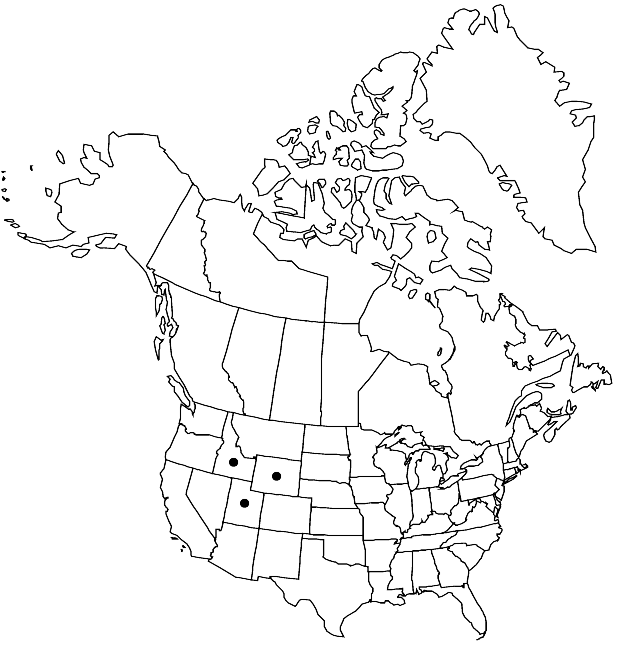Difference between revisions of "Physaria multiceps"
Novon 12: 325. 2002.
imported>Volume Importer |
imported>Volume Importer |
||
| Line 52: | Line 52: | ||
|publication year=2002 | |publication year=2002 | ||
|special status= | |special status= | ||
| − | |source xml=https:// | + | |source xml=https://bitbucket.org/aafc-mbb/fna-data-curation/src/2e0870ddd59836b60bcf96646a41e87ea5a5943a/coarse_grained_fna_xml/V7/V7_1096.xml |
|tribe=Brassicaceae tribe Physarieae | |tribe=Brassicaceae tribe Physarieae | ||
|genus=Physaria | |genus=Physaria | ||
Latest revision as of 22:30, 5 November 2020
Perennials; caudex (buried), branched, (not thickened); densely pubescent, trichomes (sessile or short-stalked), 5–8-rayed, rays furcate or bifurcate, (umbonate, rough to finely tuberculate throughout). Stems several from base, prostrate, (slender, sparsely pubescent), 0.5–2 dm. Basal leaves: blade obovate to narrowly elliptic, 1.5–6 cm, margins usually entire, rarely shallowly dentate, (surfaces densely pubescent, often silvery). Cauline leaves: blade oblanceolate to spatulate, 0.5–1 cm, margins entire, (surfaces often sparsely pubescent). Racemes (narrow), loose, (elongated in fruit). Fruiting pedicels (ascending to somewhat spreading, straight to slightly curved), 4–8(–12) mm. Flowers: sepals (greenish brown, sometimes magenta), linear or elliptic, 4.3–6(–7.5) mm, (median pair thickened apically, cucullate); petals (frequently pink or magenta in distal 1/3–1/2), spatulate to oblanceolate, 6–10(–12) mm, (claw undifferentiated from blade). Fruits broadly ovoid to suborbicular, inflated, (terete or, often, slightly angustiseptate), 3–6mm; valves sparsely pubescent; ovules usually 4, rarely 6–8 per ovary; style 3–6.5 mm. Seeds plump.
Phenology: Flowering May–Jul.
Habitat: Douglas-fir or spruce woodlands, limestone ridges, damp open slopes, soil pockets among rocks, crevices of rocks, decomposed calcareous rocks
Elevation: 2400-2900 m
Distribution

Idaho, Utah, Wyo.
Discussion
Selected References
None.